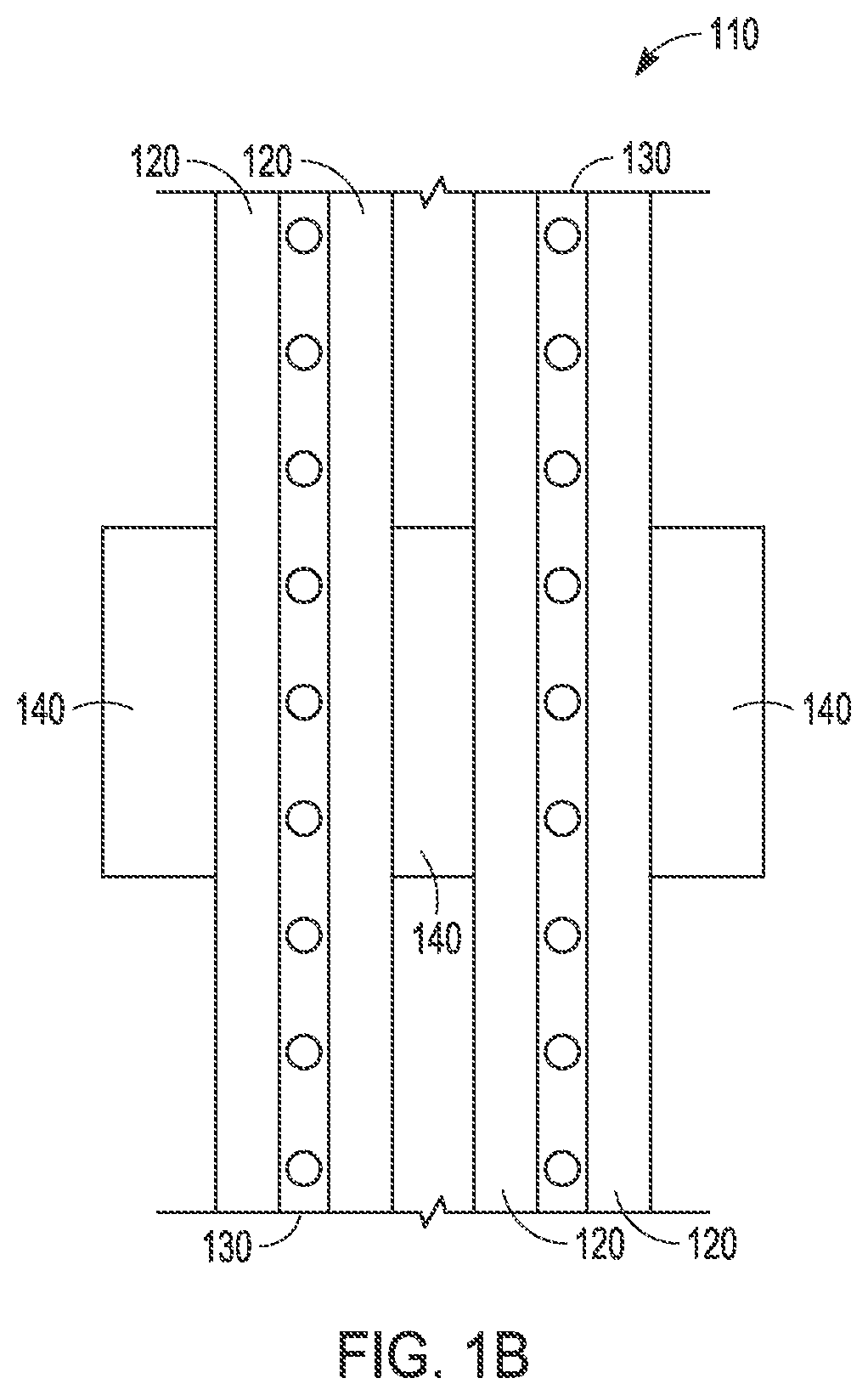Removal of phosphorus and nitrogen from water
a technology of phosphorus and nitrogen, applied in the direction of water/sewage treatment by neutralisation, water treatment parameter control, filtration, etc., can solve the problems of reducing the efficiency of water treatment, so as to reduce the concentration of phosphorus and reduce the effect of toxicity
- Summary
- Abstract
- Description
- Claims
- Application Information
AI Technical Summary
Benefits of technology
Problems solved by technology
Method used
Image
Examples
example 1
Removal of Phosphorus with Al—Cu Cell, Initial P Concentration 0.033 ppm
[0135]Water was taken from one of the channels of a local lake and the residence time in the galvanic process was modified by adjusting the water flow to provide specific residence times while keeping the other variables of the system constant (pH, conductivity, and concentration of phosphorus). Residence time (i.e., volume of the container divided by the flow rate) was gradually decreased until removal performance was reduced and then held constant for this Example. For a low initial concentration of phosphorus (0.033 ppm) residence time was reduced to approximately 15 min while maintaining an average of about 90% removal of phosphorus. The Al—Cu cell was medium-sized. The results are shown in Table 1.
[0136]
TABLE 1Removal of phosphorus with Al—Cucell, initial P concentration 0.033Water SourceLocal Lake (C44)Flow Rate (mL / min)6509501261Residence Time (mins)302015Electrochemical cells888Initial pH8.438.438.43Fina...
example 2
Removal of Phosphorus with Al—Cu Cell, Initial P Concentration 0.451 ppm
[0137]Water from a local inland wastewater treatment facility was processed to evaluate the effect of increasing solution conductivity. Residence time was held constant during this Example at 21 min. Conductivity was modified by adding NaCl. This Example demonstrates the beneficial effect of increased conductivity on the effectiveness of phosphorus removal. The Al—Cu cell was medium-sized. The results are shown in Table 2.
[0138]
TABLE 2Removal of phosphorus with Al—Cu cell, initial P concentration0.451 ppm. Cell size = medium.Water SourceInland Wastewater PlantFlow Rate (mL / min)920920Residence Time (mins)2121Electrochemical cells88Initial pH7.697.69Final pH7.026.93Initial Conductivity (μS)673960Final Conductivity (μS)672962Initial reactive-P (ppm)0.4510.451Final reactive-P (ppm)0.0620.027% P removal86.394.0Final total Al (ppm)1.151.81Final dissolved Al (ppm)0.0370.056
example 3
Removal of Phosphorus with Al—Cu Cell, Initial P Concentration 0.392 ppm
[0139]A coastal wastewater treatment plant effluent with high electrical conductivity was treated using the medium Al—Cu cell. As noted in Example 2 above, increased conductivity is beneficial. The water treated in this Example was from a coastal location where the salt (NaCl) concentration results in elevated conductivity. The purpose of this Example is to evaluate the loss of sacrificial electrode material to the treated water solution and to evaluate this relationship as a function of pH. The final phosphorus removal efficiency remained constant;
[0140]however, the concentration of total aluminum (dissolved and solid) decreases when modifying the pH from pH 7 to pH 6.5. This Example demonstrates the ability to control the loss of material from the sacrificial electrode by adjusting the pH. The results are shown in Table 3.
[0141]
TABLE 3Removal of phosphorus with Al—Cu cell, initial P concentration0.392 ppm. Cel...
PUM
| Property | Measurement | Unit |
|---|---|---|
| work function | aaaaa | aaaaa |
| surface area | aaaaa | aaaaa |
| surface area | aaaaa | aaaaa |
Abstract
Description
Claims
Application Information
 Login to View More
Login to View More - R&D
- Intellectual Property
- Life Sciences
- Materials
- Tech Scout
- Unparalleled Data Quality
- Higher Quality Content
- 60% Fewer Hallucinations
Browse by: Latest US Patents, China's latest patents, Technical Efficacy Thesaurus, Application Domain, Technology Topic, Popular Technical Reports.
© 2025 PatSnap. All rights reserved.Legal|Privacy policy|Modern Slavery Act Transparency Statement|Sitemap|About US| Contact US: help@patsnap.com



